If you plan to visit Mt. Takao for hiking from the center of Tokyo, you might take a train on the Keio Line from the Shinjuku Station for the Takaosanguchi Station.
It’s just one hour train ride.
Discount tickets will be available including a cable car or a chair lift the details of which can be obtained by clicking the following link:
https://www.keio.co.jp/english/tickets/discount.html
For how to purchase the tickets, please click the following link:
https://www.keio.co.jp/english/tickets/pdf/discount_mttakao.pdf
Alternatively, you might use JR train service on the JR Chuo Line for the Takao Station where you are supposed to change trains to the Keio Line for the Takaosanguchi Station which is the next stop.
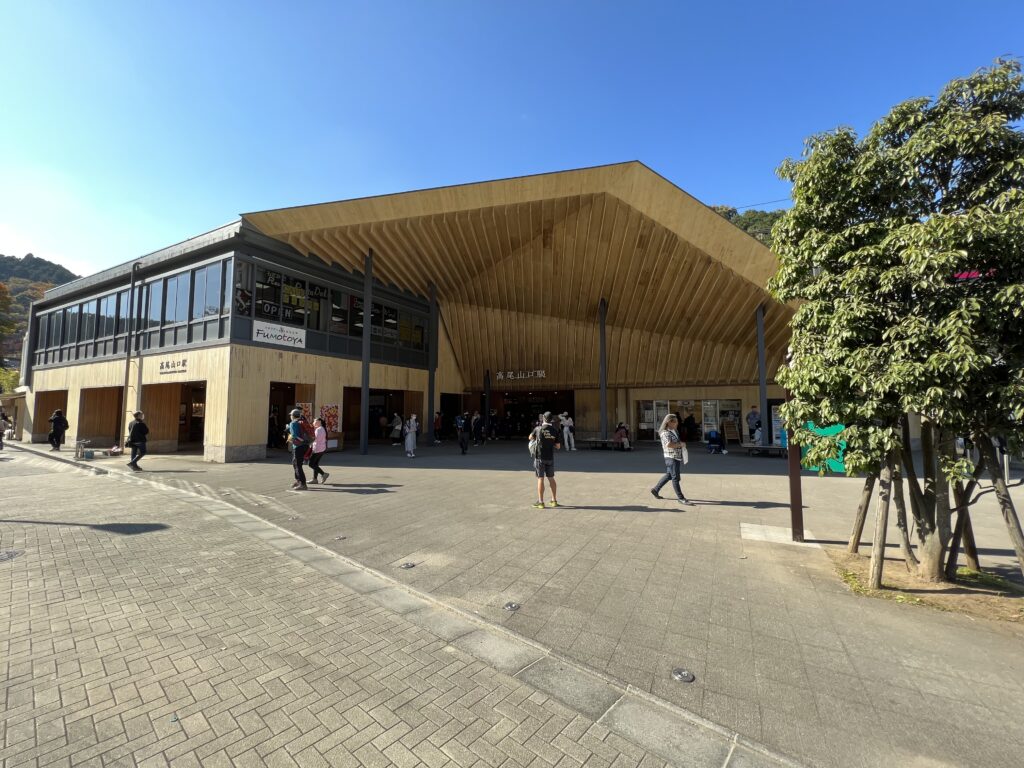
After getting off a train at the Takaosanguchi Station, a 5-minute walk will bring you to the starting point of the mountain trails.
Unless you should be a repeat visitor, it would be safer to choose Trail 1 as a hiking course to the peak of the mountain.
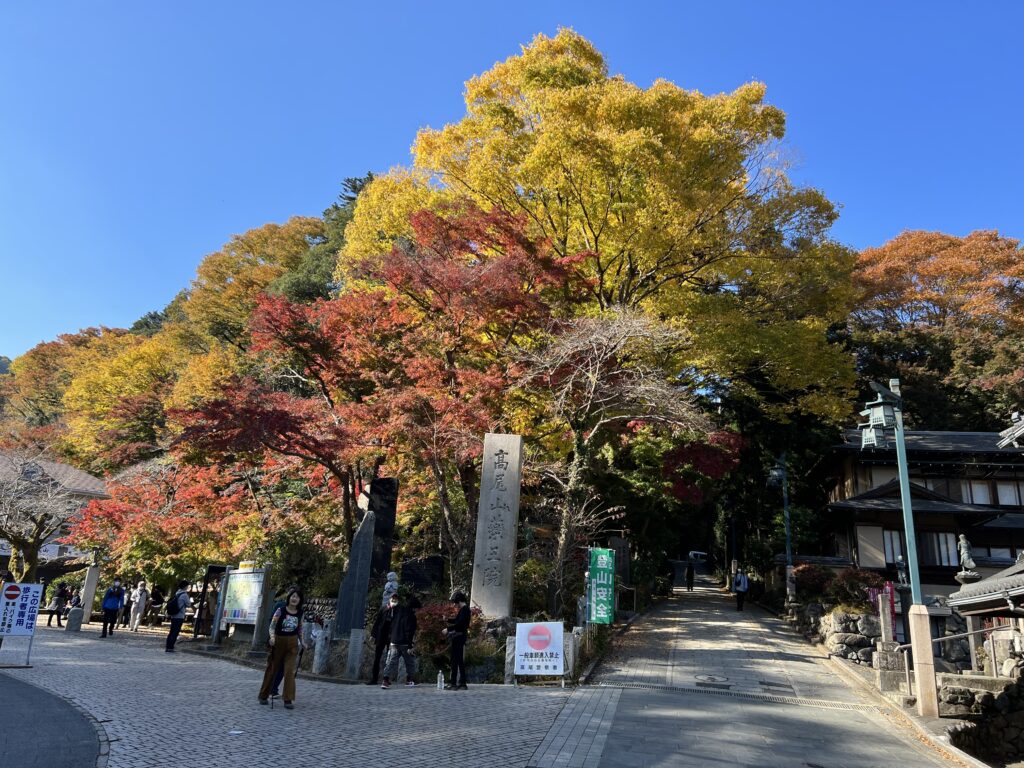
By following Trail 1, you should be able to enjoy both beauties of nature and unique Japanese religious culture going through the precincts of Yakuo-in Temple.
Mt. Takao is located within Meiji no Mori Takao Quasi-National Park which was established in 1967.
It is the smallest one among 55 Quasi-National Parks in Japan.
It is blessed with the richness of nature with a wide variety of animals and plants irrespective of its small size.
So, for the preservation of environment, you must observe some rules here which include:
1. Don’t leave any garbage behind! You must take it back home in a plastic bag or something together with good memories. In fact, all the garbage boxes have been removed from Mt. Takao since 1986.
2. Keep on trails! Aside from the preservation of environment, some slopes of Mt. Takao outside the mountain trails are unexpectedly steep and dangerous.
3. Don’t disturb wildlife or plants! What you can take here are just their photos.
4. Don’t feed wildlife! Human foods are not good for animals and feeding wildlife can cause serious problems for both animals and humans.
Around the starting point of Trail 1, you will find the statue called Osoji Kozo, literally, a cleaning young Buddhist trainee monk which was set up in 1993.
He has been a symbol of our Don’t leave any garbage behind! campaign at Mt. Takao ever since then.
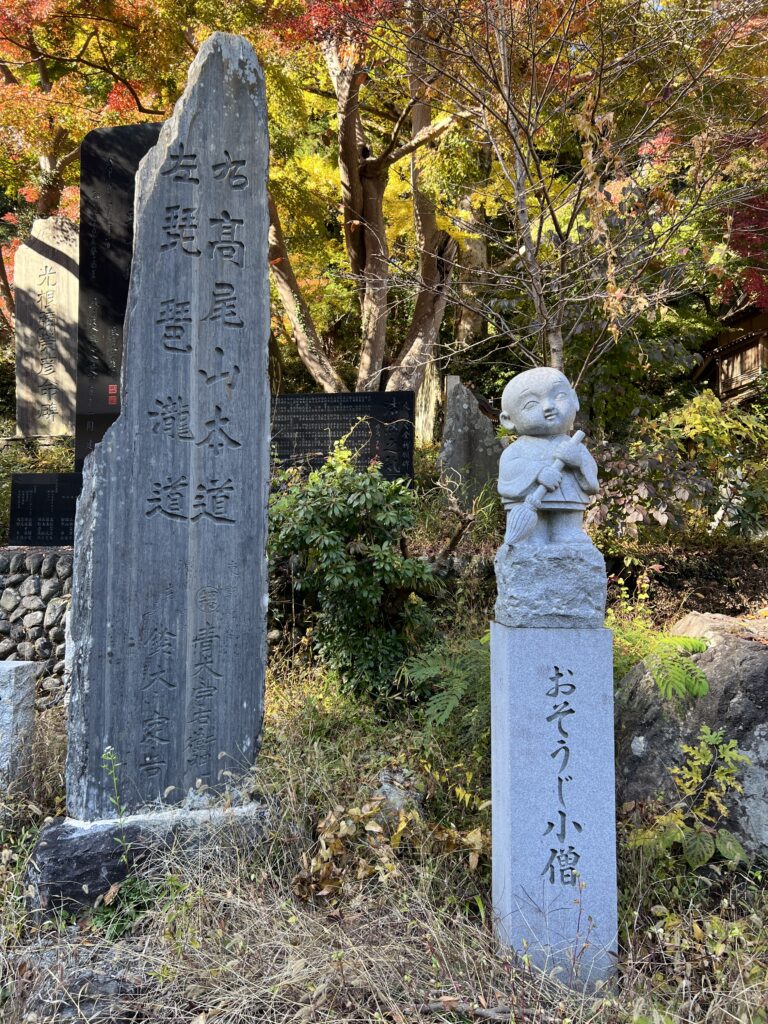
Aside from Trail 1, there are multiple mountain trails as a choice to the peak of Mt. Takao.
You can get the relevant information from either of the following links for instance:
https://www.takao599museum.jp/explore/?lang=en).
https://www.gotokyo.org/book/actibook/2011_takao-map_EN/HTML5/sd.html#/page/1
It should be noted, however, that only by following Trail 1 you will have good access to public comfort station (including western style toilet) which could be a very important point to many of the visitors from overseas to Mt. Takao.
The hike to the peak of Mt. Takao takes about 90 minutes from the base of the mountain, but that time can be cut in half by taking a cable car or a chair lift.
Having said that, as there are a lot of things to see (and eat or buy?) on the way, even by taking a cable car or a chair lift, you might assume that it could take 1.5 – 2 hours to get to the peak of the mountain.

After leaving the mountain base which is at some 201 meters from the sea level, one of the first public toilets is located adjacent to the Takaosan Station (i.e. the cable car station) which is at an altitude of 472 meters or the Sanjo Station (i.e. the chair lift station) which is at an altitude of 462 meters.
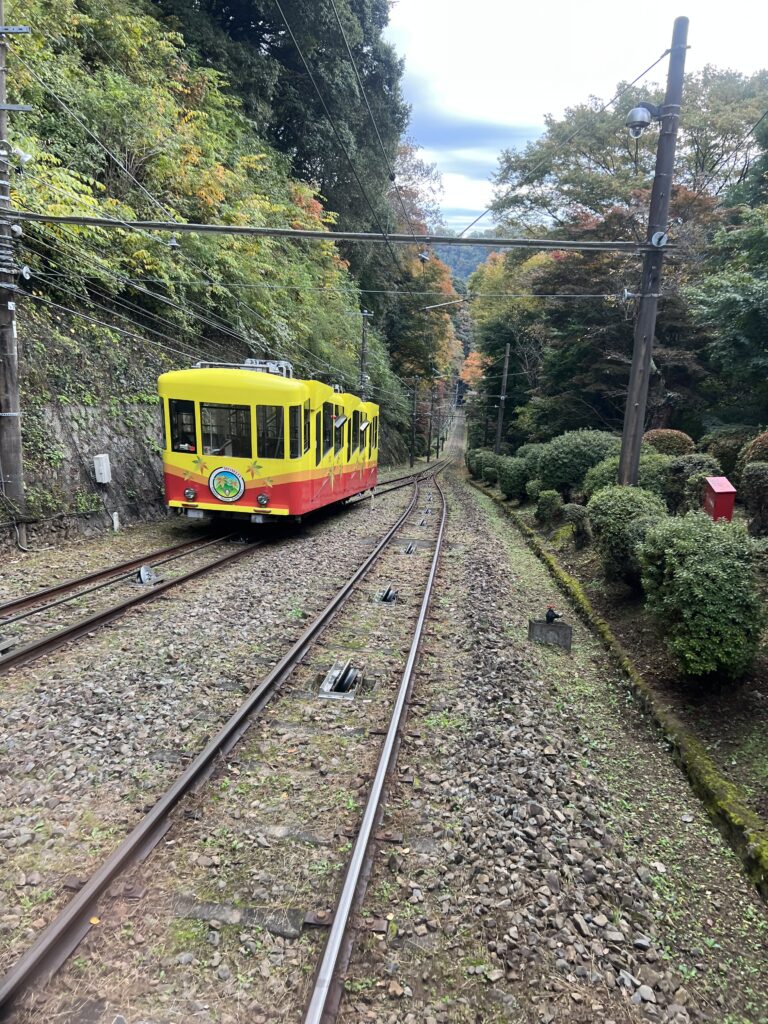
From the Takaosan Station or the Sanjo Station, by following Trail 1, it will take some 25 – 30 minutes to Yakuo-in Temple firstly passing by some 500 year old legendary Tako-sugi, literally, Octopus Cedar Tree as one of the landmarks in Mt. Takao.
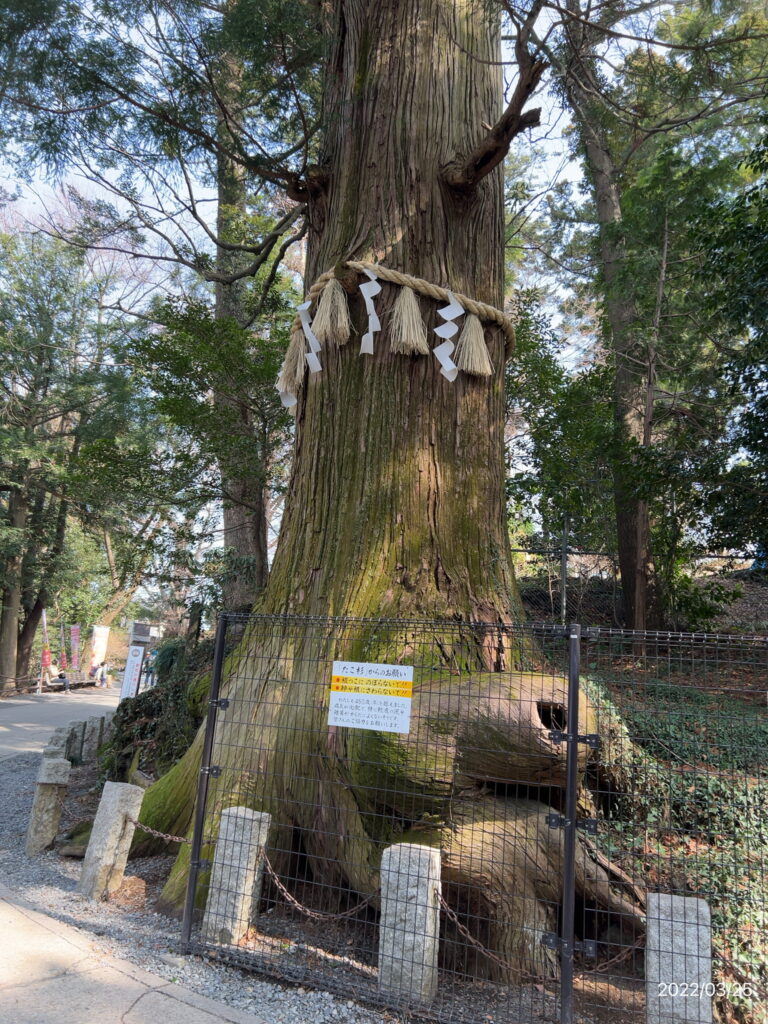
Then, you are going through the first Shinto style gate called Joshin-mon, literally, the Gate of Purified Heart, entering into the sacred world from the ordinary world.
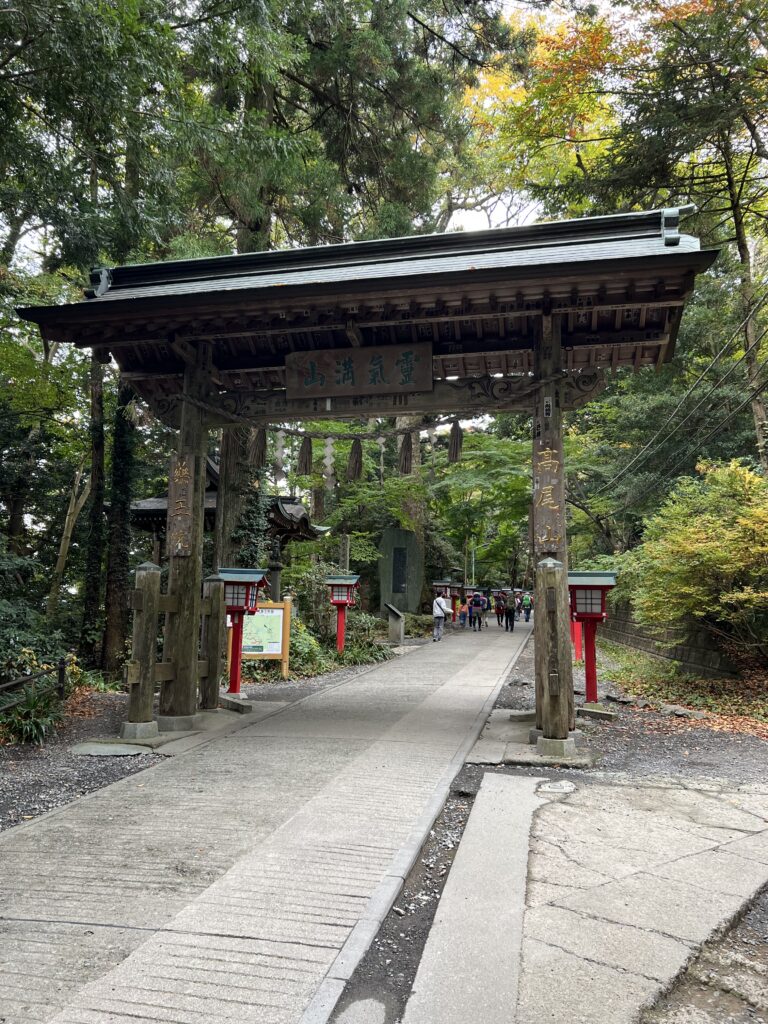
Moving forward for a few minutes, you will reach the fork on Trail 1 and will be pressed for a decision as to which route you should choose, Otoko-zaka (with 108 stone steps), literally, the Slope for Men on the left side or Onna-zaka, literally, the Slope for Women on the right side.
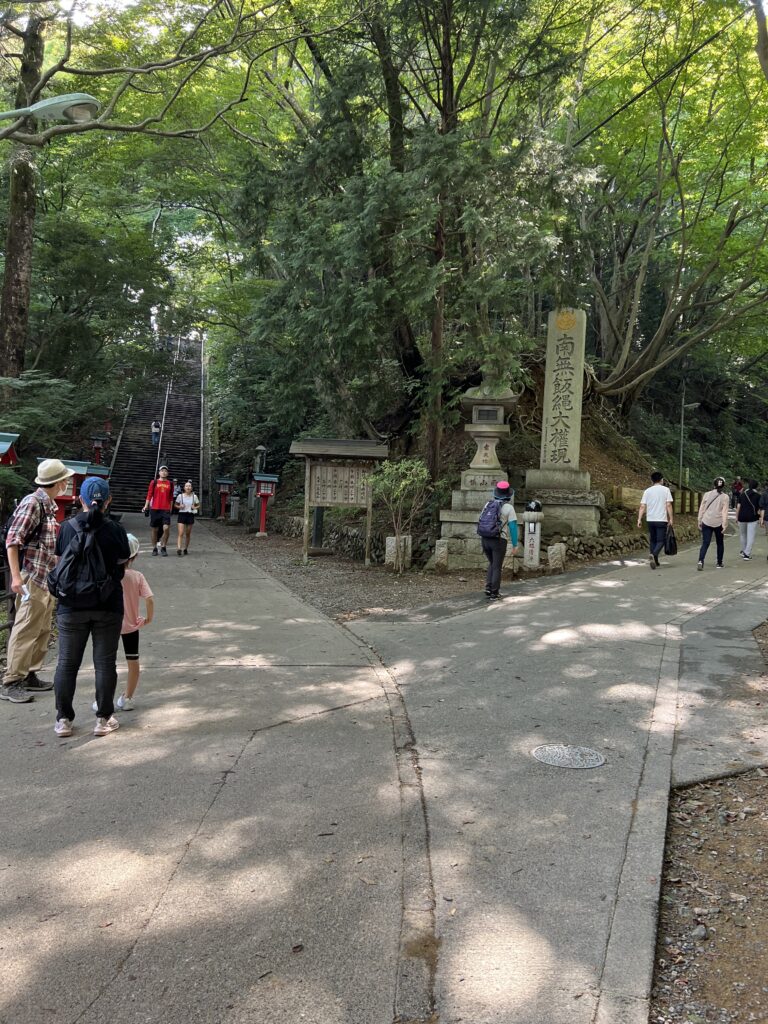
It would be worth detouring to Yuki-en, literally, the Joyful Garden which is located at a slightly elevated place just between Otoko-zaka and Onna-zaka.
You will find some interesting things there including the photogenic white stupa, the bronze statue of Izuna Daigongen, the religious ruler of Mt. Takao installed in front of the outdoor fire altar called Saitogomadan, etc.
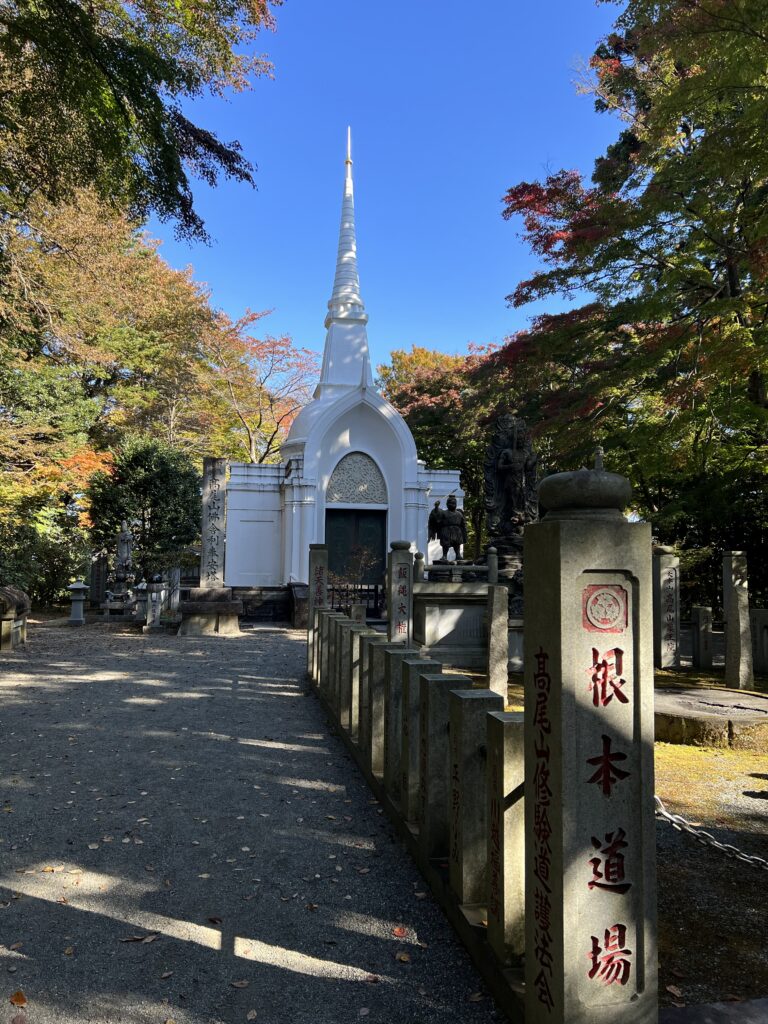
After leaving Yuki-en, you will pass by the rows of fifteen large cedar trees all of which are some 700 years old or older and are designated as natural monuments by the Tokyo Metropolitan Government.

Finally, going through the second gate called Shitenno-mon, literally, the Gate of Four Heavenly Kings, which is a Buddhist style gate, you will get into the precencts of Yakuo-in Temple.

In the lowest level of the precincts of Yakuo-in Temple, you will find the second public toilet.
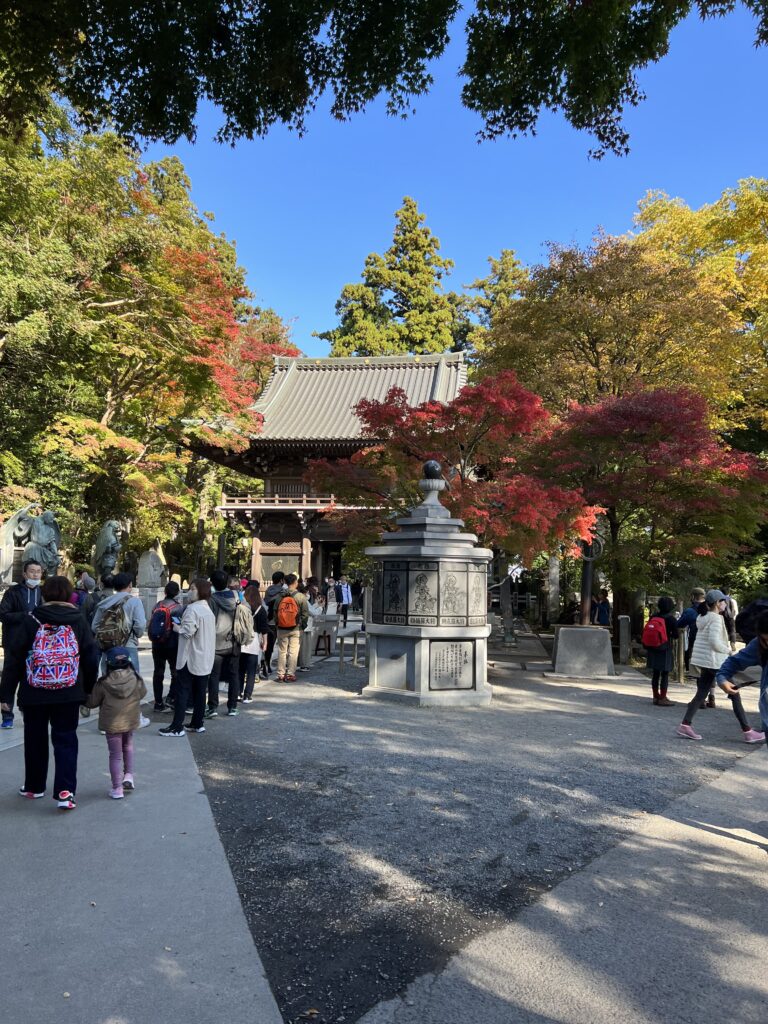
After going through the grounds of Yakuo-in Temple where there are a lot of things to see (and eat or buy), in 10 – 15 minutes you should be able to find the third public toilet just before the peak of the mountain.

I would say that the third public toilet should arguably be the world most luxurious public comfort station set up in mountains, which was constructed 2012 as a two-storied all-cypress structure equipped with shower toilets.
In fact, it was one of the public toilets that received the inaugural Toilet of the Year Award from the Japanese government in 2015.
It should be noted that the second floor is for the exclusive use for women in high season.
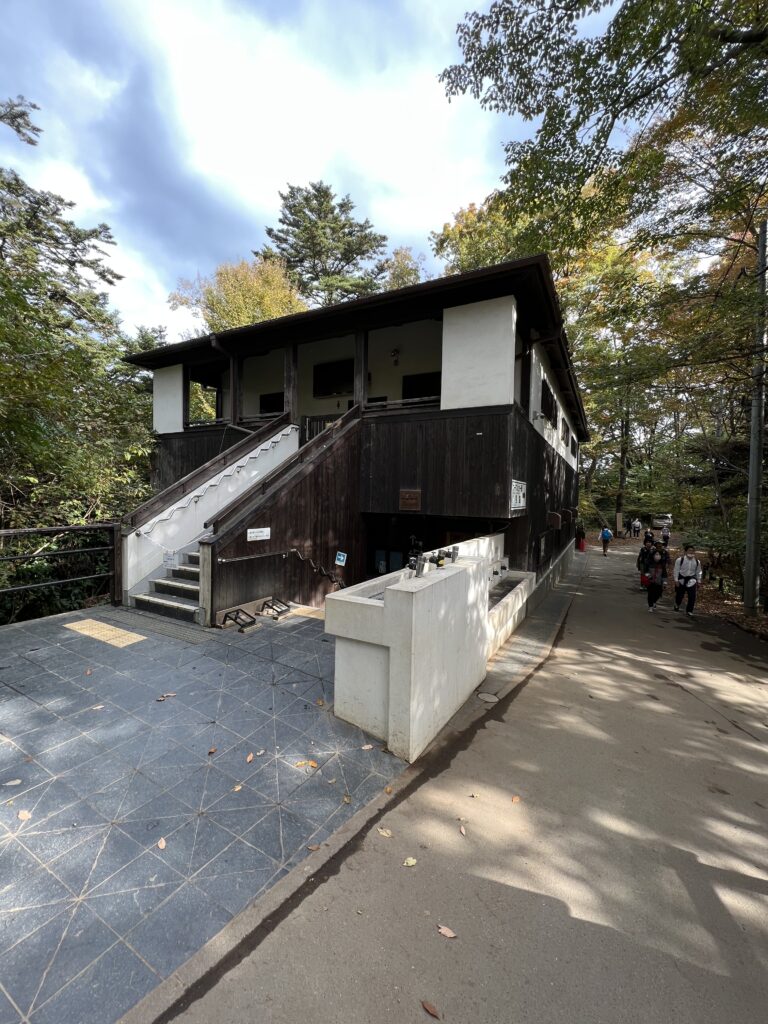
At the peak of the mountain, there is also another toilet adjacent to the Takao Visitor Center.
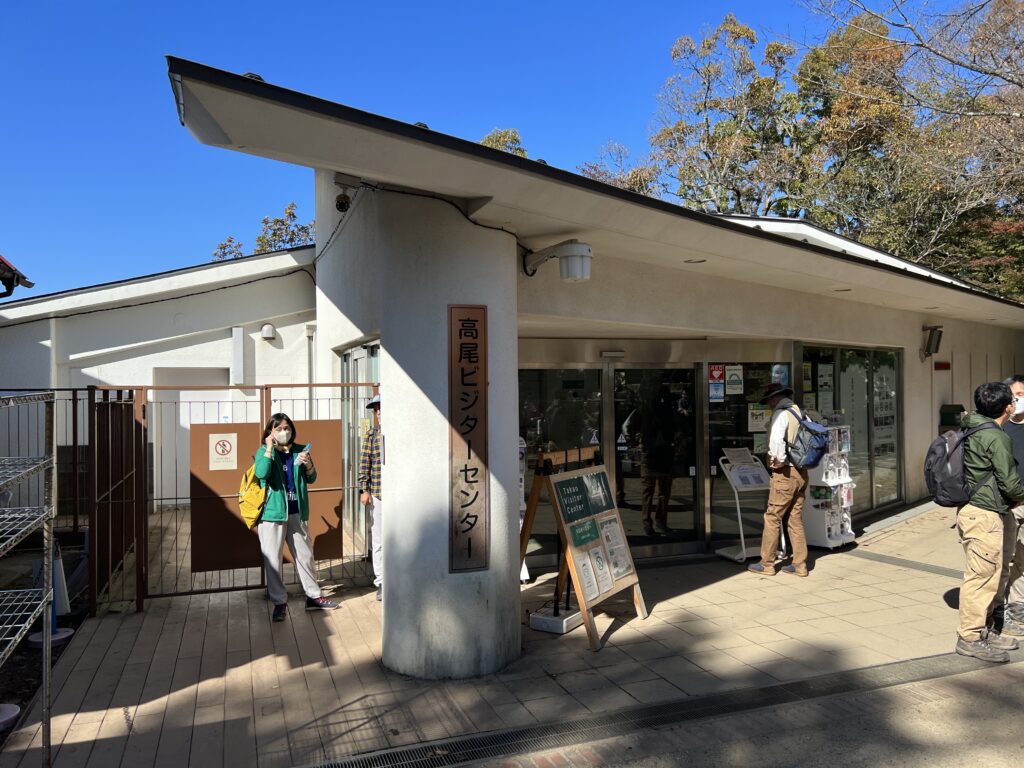
At the peak of the mountain, you should also be able to find another statue of Osoji Kozo which should remind you of our Don’t leave any garbage behind! campaign.

If you should behave very well accordingly (and should be very lucky) you might be able to see Mt. Fuji from the peak of the mountain.

On the way back, you might take a different route for a change, for instance, for the first couple of minutes Trail 1, then switching to Iroha no Mori Trail a part of which is characterized by nice stair-like wooden steps.
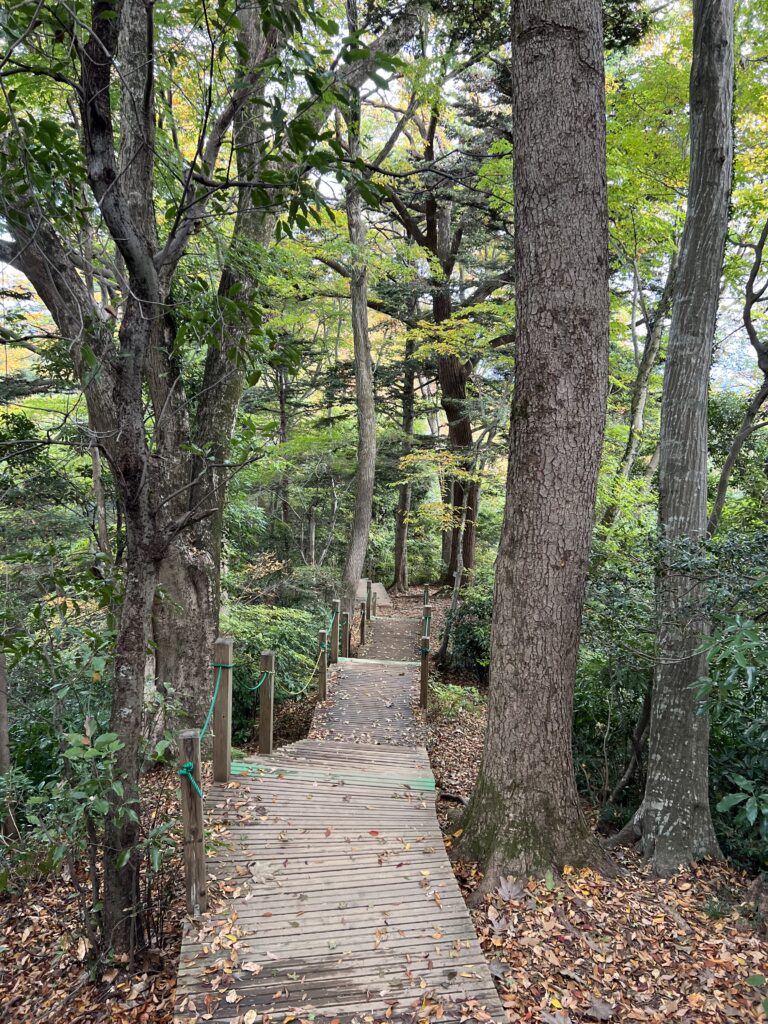
And then, you might further switch to Trail 4 going through a suspension bridge called Miyama-bashi Bridge which, I would say, is one of the highlights on that route and then again back to Trail 1.
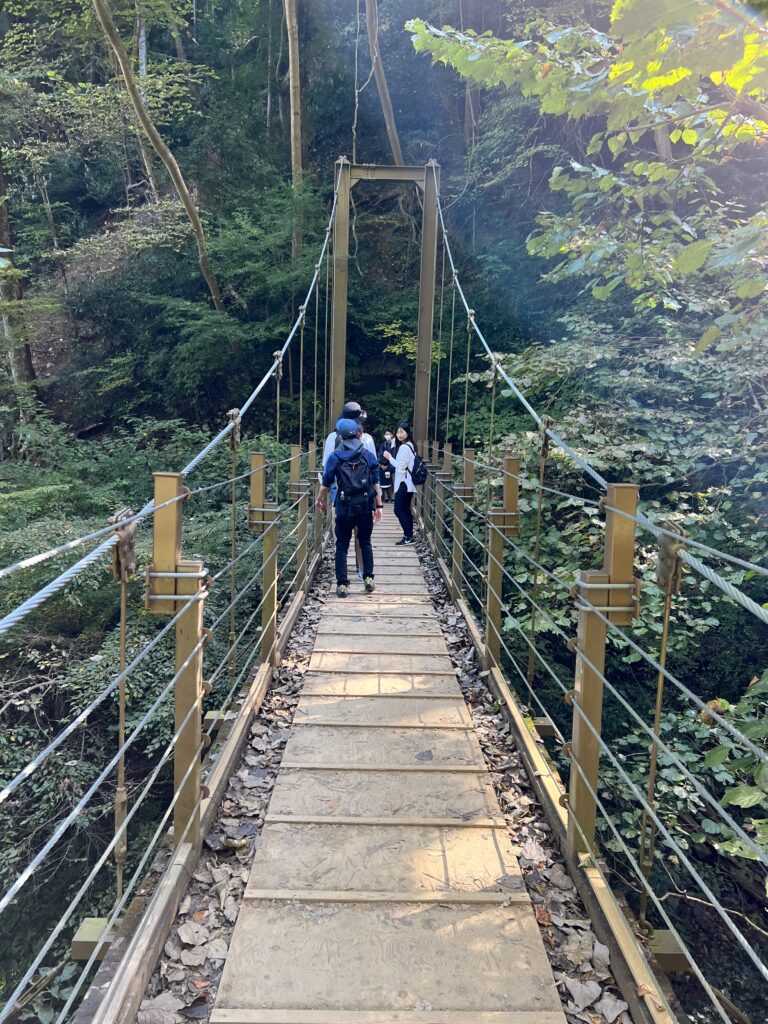
If you should take a cable car on the way, you might take a chair lift on the way back.

Having said that, you may have to stand in a long line for a cable car or a chair lift in high season.
In any event, on the way back, it should take only 30 – 40 minutes on foot to the base of the mountain from the chair lift station or the cable car station and it may also be nice to walk down Trail 1 via Konpiradaienchi or Konpiradai Observation Deck.
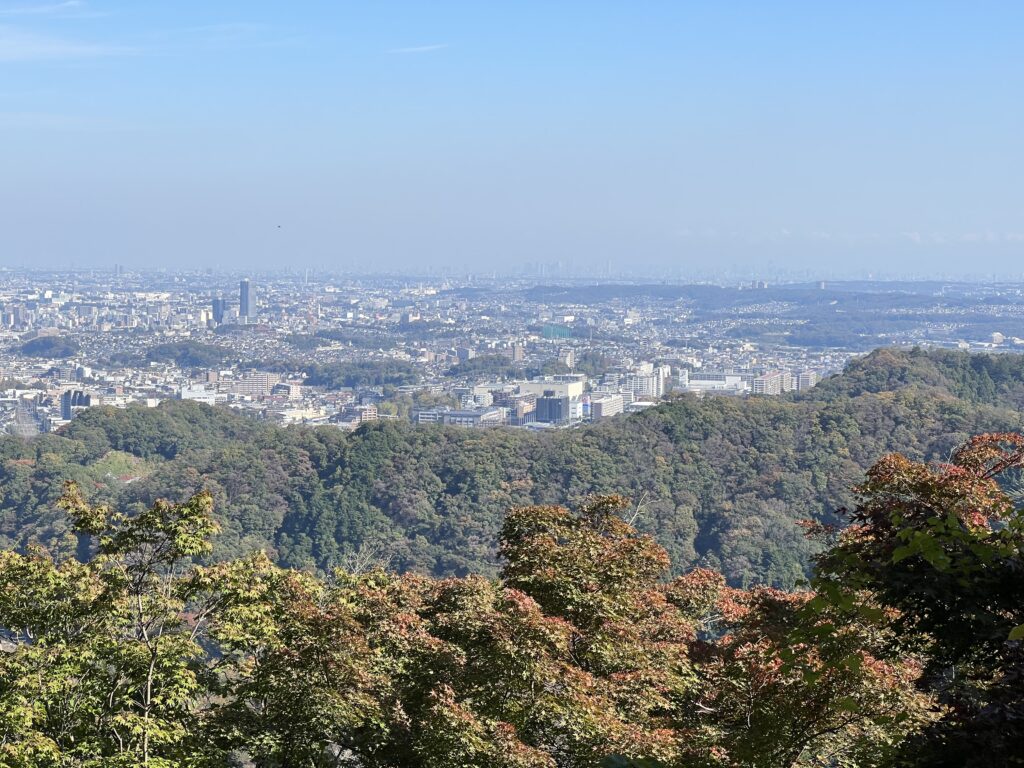
It is jokingly said that (i) during the so-called Golden Week (which is a holiday-studded week including Showa Day, Constitution Day, Green Day, and Children’s Day, on April 29, May 3, 4 and 5, respectively) for beautiful fresh green leaves, (ii) on weekends and national holidays in November for beautiful multi-colored autumn leaves and (iii) on the first three days of the New Year for the first visit of the year to Yakuo-in Temple to make traditional New Year’s wishes for health and happiness, Mt. Takao is so crowed with visitors as the Shinjuku Station in Tokyo, the world busiest railway station, in the rush hours.
In fact, the spa facility called Keio Takaosan Onsen Gokurakuyu (URL: https://www.takaosan-onsen.jp/english/index.html) adjacent to Takaosanguchi Station on the Keio Line generally charges a higher admission fee for high season such as Golden Week, the autumn foliage season of November and the first three days of the New Year as well as weekends and other national holidays.
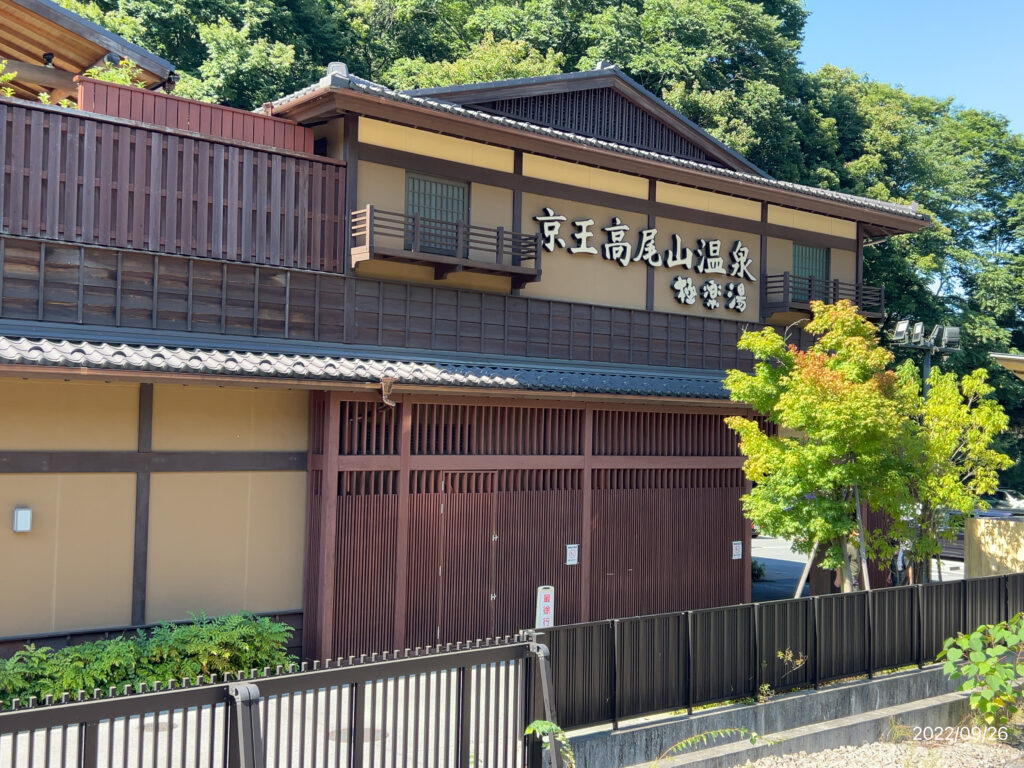
If you should have time to spare, it might be a good idea to get immense pleasure in taking a soak in a huge bath tub after the hiking.
https://www.takaosan-onsen.jp/english/index.html
When you take a bath at this type of place, there are some do’s and don’t’s that include the following:
1. Undress in the changing room. Bring a small towel with you into the bathing area. You are not allowed to wear either underwear or swimwear here and this is the case with most of the public baths in Japan while in some large hot spring facilities like resort-type hot spring pools or hot spring theme parks, you may be allowed to wear a bathing suit, especially, in the context of mixed bathing.
2. Wash off before getting into the bath. You can use the showers to get hot water to rinse off. Step quietly into the bath. In Japanese public baths, people wash their hair and body in the area equipped with showers and stools, not in the bath itself. Squat or sit on a stool while washing, and be careful not to splash or spray water on the people around you.
3. Sit quietly and enjoy a long soak. Please do not swim in the bath. Be careful not to let your hair or towel fall into the water.
4. Dry off in the bathing area before returning to the changing room.
5. Be sure to rehydrate and take some time to relax in rest areas after dressing and leaving the bath area.
Last but not least, it should be noted (i) that individuals with tattoos will be refused admittance (as tattoos are “generally” considered a symbol of members of the anti-social forces in the Japanese society) and (ii) that cameras or smartphones are not permitted in the bathing area, and visitors are asked to refrain from using them in the changing room.
Let me discuss the history of Mt. Takao as a sacred mountain next time.
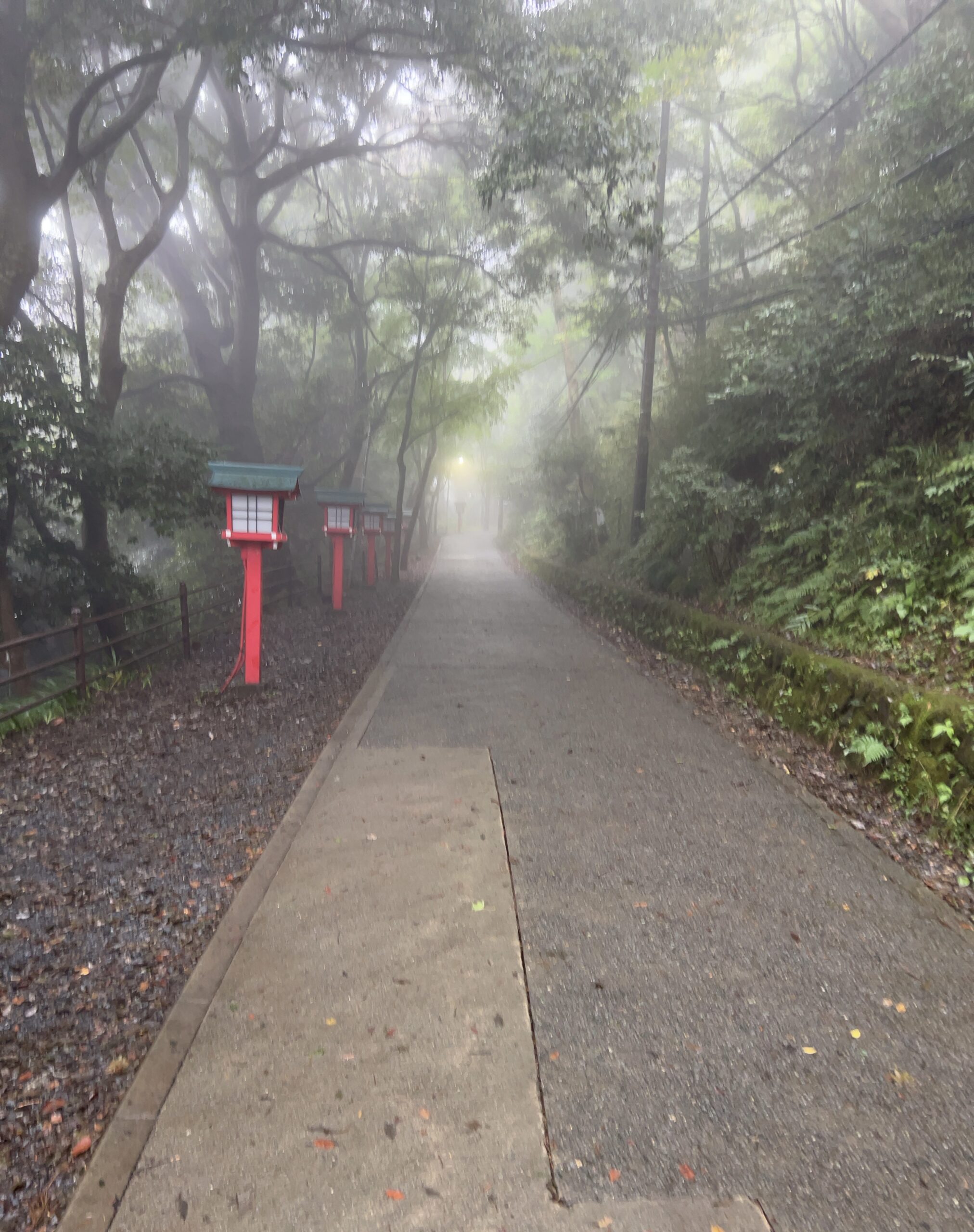
2 responses to “Trail 1 as the choice of hiking routes to the peak of Mt. Takao”
Shiro San, What a great write up on Mt. Takao. There is probably no one who knows more about the mountain, significance of the statues, structures and routes than you.
We were fortunate to have you and Nabe San as our guides!
Thank you,
Victor
Thanks, Victor for your kind comments. I’m very pleased to hear that your family appear to have enjoyed our guided tour. In the meantime, I plan to post bi-weekly about Mt. Takao and related issues including Japanese culture.
Hopefully, you should be able to enjoy my blog continuously.
Best regards
Shiro